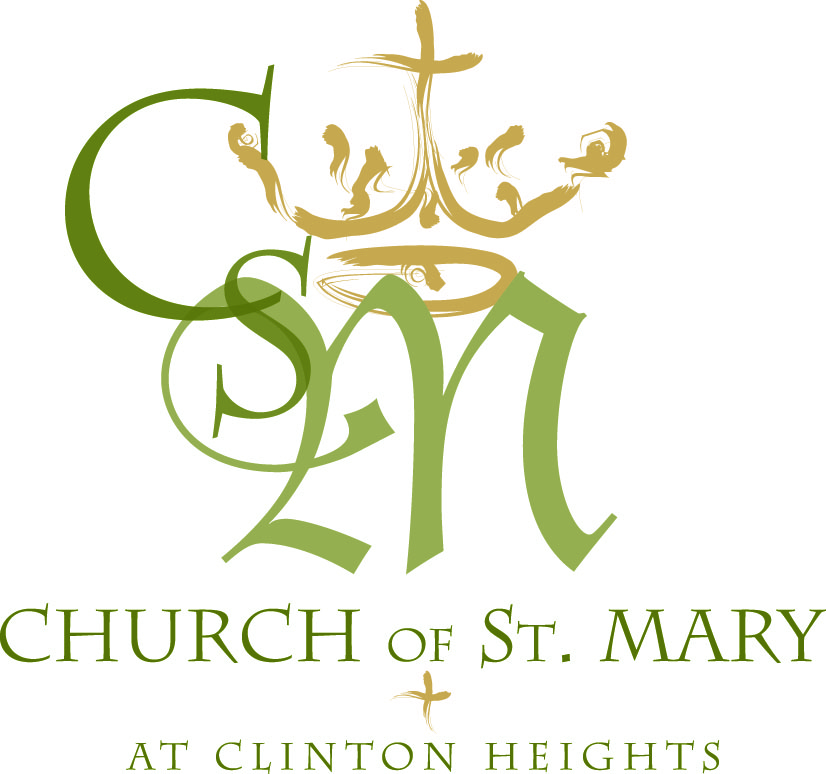For the last few weeks, we’ve been considering the various effects we will experience as we implement the third edition of the Roman Missal next weekend.
From principles, we began to consider practical adjustments last Sunday. Today, I’d like to continue our reflections beginning with the Lord’s Prayer. Already we’ve considered our posture and the common gesture of hands folded in prayer during our liturgy whenever we are standing. In fact, once we stand for the Lord’s Prayer, we will remain standing for quite some time as the liturgy flows and peaks.
Take a moment to recall what the purpose of liturgy is. While worship of God is the reason for our prayer, liturgy is the way we demonstrate our faith in a visible, tangible way; it’s through ritual that we express together what we believe. When we celebrate the liturgy then, especially the Eucharist (or ‘Mass’), we express what we believe in word and song and action…together, in unison and in unity.
Now I realize that over the last 45 years, we’ve been attempting to express this common unity in word and song and action. For those who are a little older, you’ll easily remember that when you used to go to Mass, the primary work of the liturgy was done by the priest: you weren’t really encouraged to fully, actively and consciously participate. Instead, you would go to confession or pray the rosary or perform a novena all while the priest was doing the work of the liturgy. It was as if there were two worlds: the world of the sanctuary and the world outside the sanctuary. But with Vatican II’s renewal of the liturgy, it was desire of the Church that each and every believer participate most fully in the prayer & ritual of the Mass. We were asked to set aside our own particular & private devotions in order to take up the one, universal ritualized liturgy of the Church together. This is one of the many reasons why we instituted lectors and extraordinary ministers of Holy Communion, why we have modified the ministry of usher to encompass all of the various aspects of hospitality. And throughout the last 45 years, we have been growing toward that full, active, conscious participation in the heavenly liturgy which comes into our midst and the midst of the universal church. Thus as we enter into the liturgy, we enter into this one, common, unified worship of God that is offered by the entire Church, wherever and whenever she worships.
So, moving into the Communion Rite, let’s recall some of our gestures as well as consider a new posture. For the reception of Holy Communion, one first needs to be properly disposed to receive the Lord’s Body & Blood. Each personaccording to their abilitythen approaches the sanctuary with hands folded in prayer. In unison and with little pageantry, the faithful form an ordered procession. At the present time, most people make a profound bow as they stand immediately in front of the minister. There have been some close calls over the last few years as people have bowed and in the process have knocked the paten or bowl containing the Eucharist. So, it is my hope that we will modify this only slightly: as you are approaching the Communion Minister and there remains one person between you and the minister, please make your profound bow at that time. Once you have bowed, you then take another step or two toward the minister in order to receive. The minister will continue to say, “the Body of Christ” to which you properly respond, “Amen.” Now, there are two ways you might choose to receive the Body of Christ: either on your tongue or on your hand. In either case, recall that you are “receiving” the Lord. Here, we experience a number of varied ways people act: they either grab for the host, or they hold their hands at an angle, or they forget to hold their hands out at all; or, if on the tongue, they do not hold their head up so that we can actually see where to place the host, or they only open their mouth a bit and do not hold out their tongue, or they may hold their head and tongue steady up until the last moment and then lunge forward…clearly not the cleanliest manner.
So, if you are receiving on the hand, after saying “Amen,” simply hold your hands straight out and flat, with the left hand atop the right. The minister can then place the host on your left hand and with your right hand, you then transfer the host immediately, from your hand to your tongue. If you are “a south paw”, simply reverse the hands. You are then invited to approach the minister of the Precious Blood. If you receive the Body of Christ on your tongue, after saying “Amen,” simply hold your head up, open wide your mouth and lay out your tongue…this will allow the minister to share Holy Communion with you in a most reverent fashion. You, too, are then invited to share in the Blood of Christ.
Again, while there is still one person in between you and the minister, make your profound bow then…and then after saying “Amen” you may grasp the chalice and consume the Precious Blood…after which you may procession back to your seat. Please note well: I did not say you may process out into the parking lot! No, the liturgy is not fulfilled quite yet, there is still work that God has yet to do for us…and we have yet to participate.
A simple notation here is worthwhile: when you receive either the Body of Christ from the paten, or the Blood of Christ from the chalice, you are actually and truly receiving both the Body & Blood of Christ in either species. Practically speaking, for those who cannot partake of the physical presence within the sacred wine or the sacred, wheat host, please know that if you receive only one of the sacred specieseither the Body of Christ within the element of bread or the Blood of Christ within the element of wineyou are actually partaking of both divine realities, the Body and the Blood of Christ.
Here is introduced one of the more drastic modifications that we will adopt in our parish beginning next week. Once you return to your place, please do not kneel or sit yet. Instead, honor well the principle of “common-unity” and continue to pray fervently for all others who are still approaching for Holy Communion. Once the last person has received Holy Communion, all are then encouraged to kneel together, offering sublime prayers of thanksgiving to God. Once the tabernacle has been sealed, only then may we all be seated together.
In this weekend’s bulletin, there is a very short reflection that further highlights the reasons behind our common gestures and postures during the Communion Rite…if you have any doubts or you’re not sure you have understood some of these instructions, please read the bulletin insert this weekend…it’s fairly brief.
After some time for silent prayer, we are invited to stand together for our Prayer after Communion, the blessing and the dismissal. Please keep in mind, that the dismissal is God’s sending forth for each of us…and, after the presider has recessed, all are invited to either offer a private prayer of thanks, remain in the Church for any private devotions or to proceed into the world to be that leaven which hopes to raise all people to the glory of the Father. Yes, this is the point at which you are encouraged to leave this place rejoicing.
So, now, this has been a lot, I know. You’ve been very attentive and considerate these few weeks as we’ve delved into the third edition of the Roman Missal. Thank you for allowing me your attention, your considerations, and your goodwill. I only have three brief caveats:
1. As much as we will strive for greater common-union within the Universal Church located here in Clinton Heights, utilizing strong liturgical principles: be aware that not every parish is going to do exactly as I have been describing. No surprise there, huh? But rest assured, that we have to presume that every parish, and every Catholic, will be doing their very best to be faithful to the Church’s liturgy;
2. There really is no need for us to act as though we’ve been deputized to become “liturgical police”. Instead, we’ve been thoroughly invited to unite our minds and hearts, our words and gestures and postures. But there are sometimes circumstances that people find themselves in, from which they are unable to participate in common postures or gestures. That’s alright…do the best you can. What is not alright is when someone might choose to actively disagree with our worship, to stubbornly set themselves outside of communion with the worshipping body. Still, our best response will always be one of charity and acceptance of whomever comes to be with us…however they come to be with us. There’s never a need, however, for us to ‘police’ the liturgy.
3. Be patient over the next several weeks, months and even years. This is all so new to every one of us…myself very much included!
- Be patient with me as I work very hard to lead our common prayer: I guarantee you I will make mistakes and I’ll stumble across new words and phrases for months to come.
- Be patient with those around you: we all learn and adapt at different speeds and in different ways…simply be accepting of the best efforts of all those around you.
- And by all means, be patient with yourself. You may find that the comfort of prayer might escape you for a few weeks, or you may become distracted by all the modifications. That’s natural, so expect it. And when it comes, welcome that challenge, and simply keep trying to enter more fully, actively and consciously into the ritual & liturgy of the Church…all while God Himself comes to meet us and dwell within & among us!
Thank you again; God bless you and love you always.





